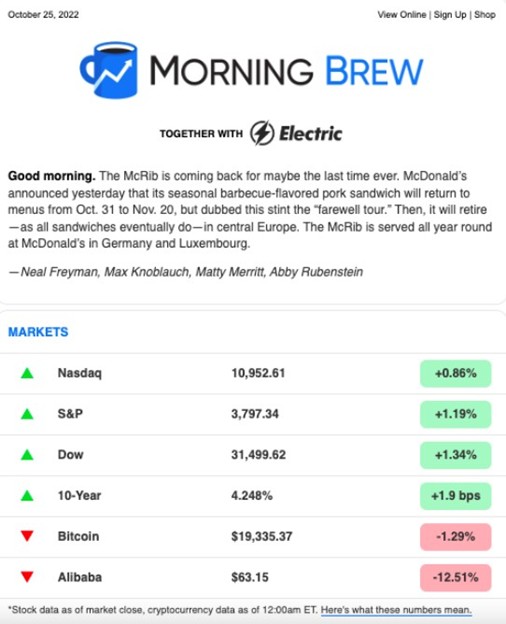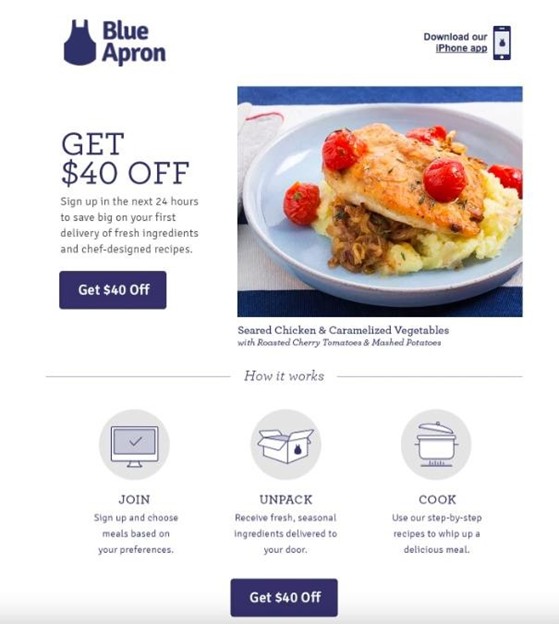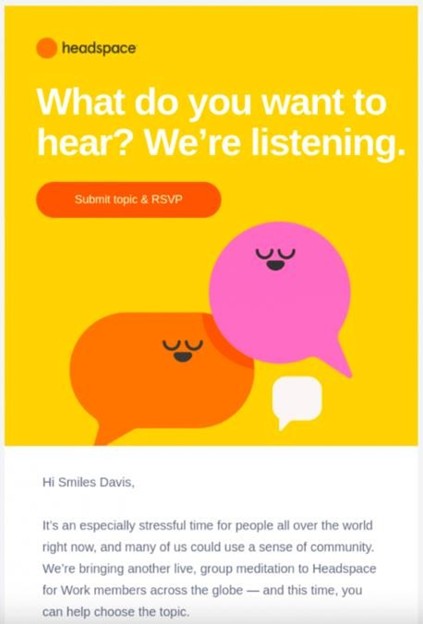Here’s what I’ve learned from my marketing journey: the key to becoming a successful email marketer is to look at real email marketing examples.
These email marketing samples aren’t just creative—they show you how to connect with your audience and get results. Whether it’s a friendly welcome email or a well-timed offer, they can spark ideas for your next campaign.
But let’s be honest—creating emails that grab attention isn’t always easy. Maybe your open rates are low, or your readers aren’t clicking through. It’s frustrating when you’ve put in so much effort, but the results just aren’t there.
That’s where learning from others comes in. This blog is packed with 10 inspiring email marketing examples that actually work. These aren’t just ideas—they’re proven strategies you can adapt to your own campaigns.
Ready to make your emails stand out? Let’s dive in!
The goal of email marketing isn’t just delivering messages and keeping your target audience informed. It is also about sparking engagement, driving action, and building relationships.
And to achieve that goal, you need the right marketing strategy, combined with creativity.
Whether you’re welcoming new subscribers, offering exclusive deals, or reconnecting with inactive users, these examples will show you how to create campaigns that truly resonate with your audience.
Let’s check these 10 standout email marketing examples and learn what makes them successful.
The first email you send to a subscriber sets the tone for your relationship. A great welcome email greets new users warmly and provides value right away. Here are a few email marketing examples to get inspired from:
Mailmodo excels with its value email, which aims to drive report downloads. The subject line teases the contents of the “State of Emails Report,” enticing recipients to learn more.
By providing a preview of the report’s success and using appealing brand colors, Mailmodo effectively captures attention and prompts action. This type of email demonstrates how delivering valuable content can enhance customer engagement.

Duolingo’s welcome email introduces users to their language-learning journey with a playful tone. The subject line, “Welcome to Duolingo! Our top tip to get you started,” sparks curiosity and excitement.
The email features cheerful visuals of their signature owl mascot and a clear CTA, like “Learn Now,” making it easy for users to dive in.
Duolingo also includes motivational elements, like progress tracking tips, to keep users engaged. This combination of a friendly tone and actionable content makes their welcome email highly effective in turning sign-ups into active users.

Promotional emails are about offering something your audience can’t resist, whether it’s a discount, a limited time offer, or an exclusive product.
Grammarly’s promotional emails focus on solving a problem for users. They use a typical subject line like ” Write like a pro. Here’s 20% off Grammarly Premium!” It immediately highlights the value & captures the audience’s attention.
The email includes examples of how Premium features can improve writing, paired with a limited-time discount.
The design is clean, with screenshots of Grammarly in action, showcasing its benefits visually. The clear and compelling CTA, “Upgrade Now,” nudges users toward conversion without feeling pushy.

Casper, a mattress company, uses promotional emails to introduce new products. Their subject line, “Meet our new Nova Hybrid mattress,” spikes interest. The email uses high-quality images and concise text to highlight features like temperature control, addressing a common pain point for customers.
Casper also includes a unique CTA, “Shop the Nova” to add personality to the message. This approach keeps the tone light while driving product awareness.

Newsletters are your chance to stay top-of-mind by sharing valuable information regularly. They work well for brands that want to build authority or maintain a connection with their audience.
Morning Brew’s newsletters are the gold standard for engaging and informative content. Their subject lines, like “Your Daily Brew of Business News,” set the tone. The email content is broken into bite-sized sections, covering business updates, market trends, and fun trivia.
The conversational tone and use of bold subheadings make the newsletter easy to skim. CTAs like “Read Full Story” lead readers to the website, driving traffic while providing value.

Notion’s newsletters often feature user success stories, inspiring their community. A subject line like “How Teams Use Notion to Work Smarter” appeals to professionals. The email includes short case studies, each with a link to learn more.
Notion complements this with tips and templates, helping readers see immediate value in their product. By celebrating users, Notion fosters a sense of belonging within their community.

Abandoned cart emails are perfect for nudging customers who almost made a purchase but didn’t complete it. These emails use reminders and incentives to encourage users to return and check out.
ASOS excels at bringing back shoppers with their abandoned cart emails. Their subject line, “Don’t Let Your Faves Slip Away,” adds urgency without being too aggressive. The email features clear images of the left-behind items and a CTA like “Get Me.”
ASOS often includes incentives like free shipping, making it more enticing to finalize the purchase. The casual tone and visual appeal make these emails feel helpful rather than salesy.

Blue Apron takes a different approach by emphasizing value in their abandoned cart emails. Their subject line, “You forgot something delicious!” shifts focus to the benefits of their service. The email includes testimonials and highlights ease of use, paired with a discount offer to seal the deal.
This approach combines emotional appeal with practicality, making it highly effective for re-engagement.

Re-engagement emails are about rekindling interest with users who’ve stopped interacting. These emails often highlight new features or include offers to bring back lapsed customers. Let’s check a few email ads examples now:
Headspace’s re-engagement emails are all about gentle encouragement. The subject line, “We Miss You, [Name],” adds a personal touch. The email highlights new features or content, such as a recently added meditation pack, making users curious to return.
With a CTA like “Submit Topic & RSVP,” Headspace makes it easy for users to re-engage. The tone is caring, reinforcing their brand as supportive and user-focused.

Skillshare re-engages lapsed users with a tempting offer. A subject line like “Come Back and Get First Month for $0.99” grabs attention immediately. The email lists trending courses and student testimonials, reminding users of the platform’s value.
The clear CTA, “Get Your Next Month for $0.99” ties the email together. By combining urgency with value, Skillshare successfully rekindles user interest.
Email marketing is not just about sending out messages anymore; it’s evolving rapidly to meet the changing needs of consumers. If you want to stay ahead in the game, it’s essential to understand the latest trends shaping this powerful marketing channel. Let’s dive into some of the most exciting developments in email marketing today.
Have you ever received an email that felt more like a mini-website than just a plain message? That’s the magic of interactive emails! These emails allow recipients to engage directly with content without leaving their inbox. Think quizzes, polls, or even image carousels.
For example, a clothing brand might send an email featuring a style quiz that helps customers find their perfect outfit. Not only does this keep subscribers engaged, but it also provides valuable data for marketers. The more interactive your emails are, the more likely your audience will respond positively and take action.
Imagine opening an email that feels like it was crafted just for you. With AI-powered personalization, this is becoming a reality. Brands are using artificial intelligence to analyze user behavior and preferences, allowing them to tailor content specifically for each subscriber.
For instance, if you frequently purchase fitness gear, you might receive emails showcasing the latest workout apparel or exclusive discounts on running shoes. This level of personalization not only boosts engagement but also builds loyalty—customers appreciate brands that understand their needs and interests.
Social media and email marketing are two sides of the same coin, and their integration is becoming increasingly important. By linking your email campaigns with social media platforms, you can enhance your reach and engagement.
Consider including social sharing buttons in your emails or promoting your latest Instagram post directly within your newsletter. This not only encourages recipients to connect with you on multiple platforms but also creates a cohesive brand experience. Plus, it can lead to increased followers and engagement across your social channels.
Now that we’ve explored some emerging trends, let’s look at what makes an email campaign truly successful. Understanding these factors can help you craft emails that resonate with your audience and drive results.
Your subject line is like the front door to your email—it needs to be inviting enough for people to want to step inside. A compelling subject line grabs attention and sparks curiosity. For example, instead of a generic “January Newsletter,” try something more engaging like “Unlock Exclusive Deals Just for You This January!”
Experimenting with different styles—whether it’s urgency (“Last Chance for 50% Off!”) or personalization (“[Name], Your Special Offer Awaits!”)—can significantly impact open rates. Remember, a great subject line can make all the difference!
Once your audience opens your email, personalized content keeps them engaged. This means going beyond just using their name; it involves tailoring the body of your email based on their preferences and past interactions.
For instance, if someone frequently clicks on travel deals, consider sending them destination guides or travel tips along with special offers. The goal is to create a sense of relevance that makes readers feel valued and understood.
Every email should have a clear purpose, and that’s where CTAs come into play. Whether you want readers to shop now, read a blog post, or sign up for an event, make sure your call-to-action stands out.
Using action-oriented language like “Get Your Discount” or “Join the Adventure” encourages readers to take immediate action. Positioning CTAs prominently within the email also helps guide users toward what you want them to do next.
With so many people checking emails on their phones, mobile optimization is no longer optional—it’s essential. Your emails should look great and be easy to navigate on any device.
Make sure your design is responsive so that images scale correctly and text remains readable on smaller screens. Additionally, keep in mind that many users will be scrolling through their inboxes quickly; concise content and easily clickable buttons can enhance user experience significantly.
In conclusion, exploring various email marketing examples can provide valuable insights into crafting effective campaigns that resonate with your audience.
By embracing emerging trends like interactive content and AI-powered personalization, you can create engaging emails that not only capture attention but also drive action.
Remember, the key to successful email marketing lies in understanding your audience’s needs and preferences, allowing you to build meaningful connections that foster loyalty and boost conversions.
So, take inspiration from these email marketing examples and start implementing strategies that will elevate your email marketing efforts today!
Effective email marketing samples include welcome emails from brands like Ikea, which make new subscribers feel valued, and Netflix’s promotional emails that highlight subscription benefits. These examples demonstrate how engaging content and personalized approaches can drive customer interaction and loyalty.
To improve email open rates, focus on crafting compelling subject lines that spark curiosity. Personalization, such as including the recipient’s name or tailoring content to their interests, can also encourage more opens and engagement with your emails.
Mobile optimization is crucial in email marketing because a significant portion of users check emails on their smartphones. Ensuring your emails are responsive and easy to navigate on mobile devices enhances user experience and increases the likelihood of engagement.
The frequency of sending marketing emails depends on your audience and goals. Generally, a consistent schedule—whether weekly, bi-weekly, or monthly—works best. Monitor engagement metrics to find the right balance that keeps subscribers interested without overwhelming them.
Clear call-to-actions (CTAs) are direct prompts that guide recipients on what to do next, such as “Shop Now,” “Learn More,” or “Sign Up.” Effective CTAs stand out visually and use action-oriented language to encourage immediate responses from readers.
Arushi is a proficient SEO and ASO specialist with a 5-year track record working for B2B and B2C organizations. Currently, she is heading SEO strategy for Vaizle and helping businesses improve their online presence. A mountain girl at heart, she likes to recharge her creative abilities by taking long walks and listening to podcasts.